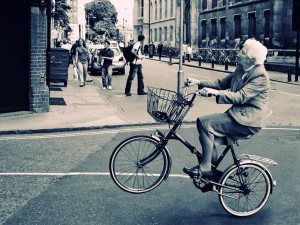From the National Institute of Ageing
Like most people, you’ve probably heard that physical activity, including exercise, is good for you. If you’re already active, keep it up. It may even be time to push yourself a little harder, try a new activity, or find new ways to add exercise to your daily life.
Don’t worry if you’ve never exercised, or if you stopped exercising for some reason. Let us help you get moving. By picking up this book and looking through it,  you’ve taken an important first step toward good health.
you’ve taken an important first step toward good health.
Why Is Physical Activity Such a Big Deal?
Regular exercise and physical activity are important to the physical and mental health of almost everyone, including older adults. Being physically active can help you continue to do the things you enjoy and stay independent as you age. Regular physical activity over long periods of time can produce long-term health benefits. That’s why health experts say that older adults should be active every day to maintain their health.
In addition, regular exercise and physical activity can reduce the risk of developing some diseases and disabilities that develop as people grow older. In some cases, exercise is an effective treatment for many chronic conditions. For example, studies show that people with arthritis, heart disease, or diabetes benefit from regular exercise. Exercise also helps people with high blood pressure, balance problems, or difficulty walking.
One of the great things about physical activity is that there are so many ways to be active. For example, you can be active in short spurts throughout the day, or you can set aside specific times of the day on specific days of the week to exercise. Many physical activities—such as brisk walking, raking leaves, or taking the stairs whenever you can—are free or low cost and do not require special equipment. You could also check out an exercise video from the library or use the fitness center at a local senior centre.
Click here to read more
#standagainstweakness
